How to Understand Your Vulnerability Through Structural Logic
This isn’t just a survey—it’s a quiet conversation about how changes in policy might become changes in your daily world. Read about my Policy Impact-O-Mat.
The Policy Impact-O-Mat
On July 16, in the last half of a meditation, the shape of it arrives. Not a plan. Not a platform. A knowing. I sit with it long enough to feel the ground beneath it. I don’t rush toward screens. I don’t outline. I let it breathe.
The question isn’t loud. It doesn’t come from fear. It drifts through the spaces people leave between sentences. How do I assess my risk? They ask it quietly. Sometimes not in words. Sometimes in posture, or in stories that end with “I just don’t know anymore.”
This question lives in bodies that hold both privilege and pressure. A passport in one hand. A diagnosis in the other. A full fridge and an empty legal safety net. These lives sit at the fault lines. Sometimes they don’t know which way to lean. Sometimes they wait too long to decide.
I’m German. I don’t live under this government. I don’t build this for myself. I build it because I know how to see patterns. Because I understand the systems behind visibility and silence. Because I read structure in a way others read tone.
Where I come from, we have tools that don’t ask who you vote for—they ask how far your answers stand from the policies on paper. This isn't a quiz. It’s a distance measurement. I take that idea and turn it toward something else. Not party programs. Law.
Because what changes a life isn’t what someone says. It’s what becomes enforceable.
I start watching what passes. The volume overwhelms. It’s designed to. The current U.S. administration floods the system with orders, bills, resolutions, declarations. I start listening with a different filter: not “what does this mean politically,” rather “who does this touch, and how?”
From the outside, it becomes clear fast. The system isn’t hiding what it does. It’s burying it in quantity. The legal texts change language that shapes access: to care, to safety, to livelihood. One law alone, the One Big Beautiful Bill, reaches into at least ten major domains—housing, labor, health, education, immigration, more. Each shift in phrase displaces protection.
I let patterns rise. I look for the structural pressure points. I ask what groups are being outlined not by name, yet by condition. Single parents. Noncitizens. People with uteruses. Disabled people. Caregivers. People who rent. People who rely on public services. People whose lives involve interdependence.
This is where the law focuses now. Not always through headline names. Often through definition changes. Through eligibility revisions. Through erasure of frameworks that once held nuance.
I build the Impact-O-Mat in response to this erosion. It reflects your position in policy space. It mirrors how your life, in its full context, stands within the current legal framework.
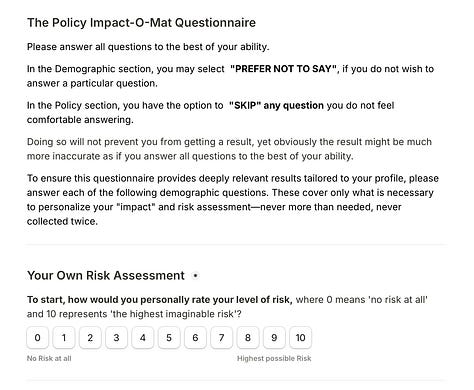
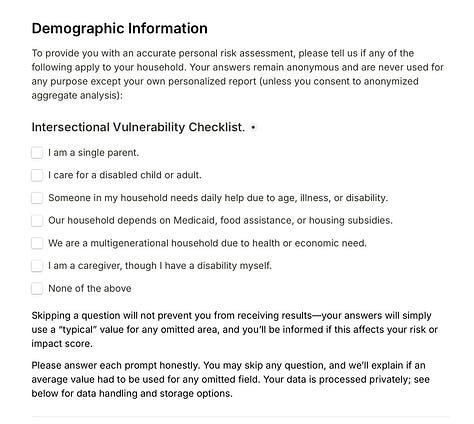
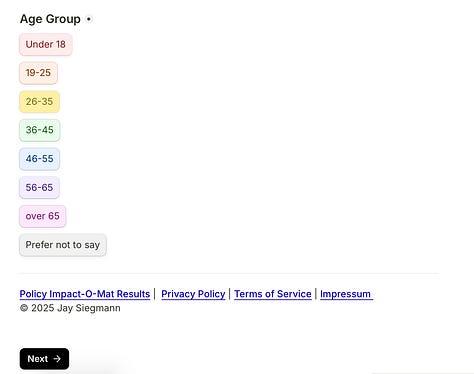
I don’t measure feelings. I don’t code for worry. I map how law meets body. I do this because some people overestimate their exposure and live braced. Others underestimate it and stay still too long. I do this because a guess isn’t always enough.
The Impact-O-Mat invites you into a reflection with structure. Not to frighten. To reveal. It shows how the layers of who you are—and how you live—intersect with the legal shifts that already passed. It lets you see what lives beneath the noise.
This is not a predictive model. It is present tense. Everything it draws from exists now. Already signed. Already activated.
What you do with that clarity remains yours. You may sense that your intuition was spot on. You may discover that your risk sits higher than expected. You may decide to speak, plan, gather, leave, stay. Every response is legitimate. The mirror does not dictate movement. It names position.
I offer this because the system thrives on confusion. It benefits when you can’t tell whether you should worry. It absorbs energy when you turn in circles. It hopes you will seek comfort instead of clarity.
I don’t believe in comfort. I believe in orientation.
Systems grow through repetition. Through learned helplessness. Through overwhelming detail that leads to collapse. They collapse your knowing by flooding your focus. When you return to structure, you interrupt that collapse.
This is the invitation.
To see.
To name.
To begin from where you already stand.
I build this once. You use it however you need. I do not collect your answers. I do not archive. I do not monetize. You walk through it on your own terms.
The system hides in mass. This tool reveals through pattern.
And from pattern, courage can rise.
If you need a starting point, this is one.
If you need a mirror that names the invisible, this holds it.
If you wonder whether your life still qualifies for safety, this helps you locate that question in law.
I build it because many are unsure where they stand. I offer it so you don’t have to wonder.
You know your life. This reflects how policy sees it now.
And from that knowing, your next decision becomes more yours than theirs.
If this tool helps you understand your position more clearly—if you find value in the mirror it offers—please consider supporting its continued development.
Donations help cover the time and maintenance behind this project.
For inquiries, licensing, access to anonymized data, or deeper methodological and structural questions, contact me directly at jsiegmann@gmail.com.
From this reflection, your next decision becomes your own.
You'll find additional insight in this Executive Summary
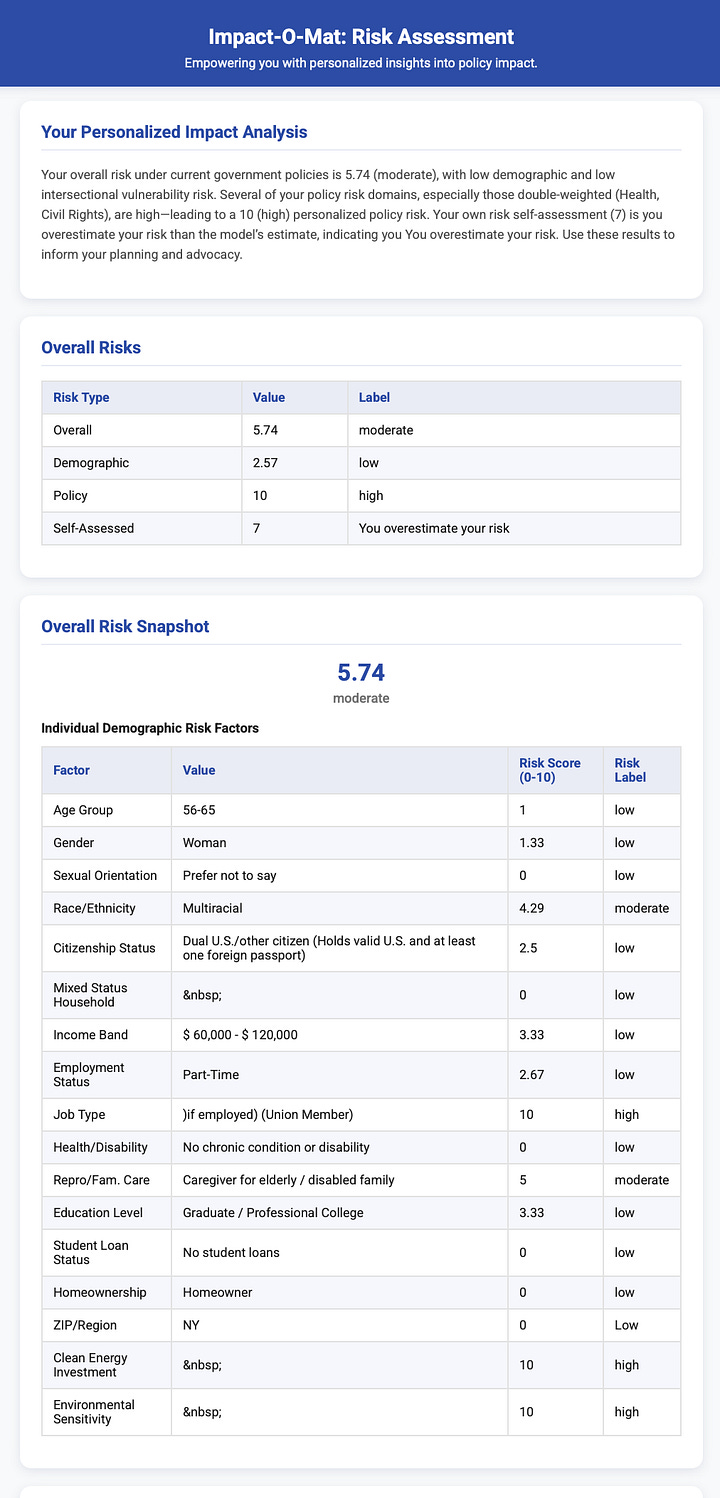
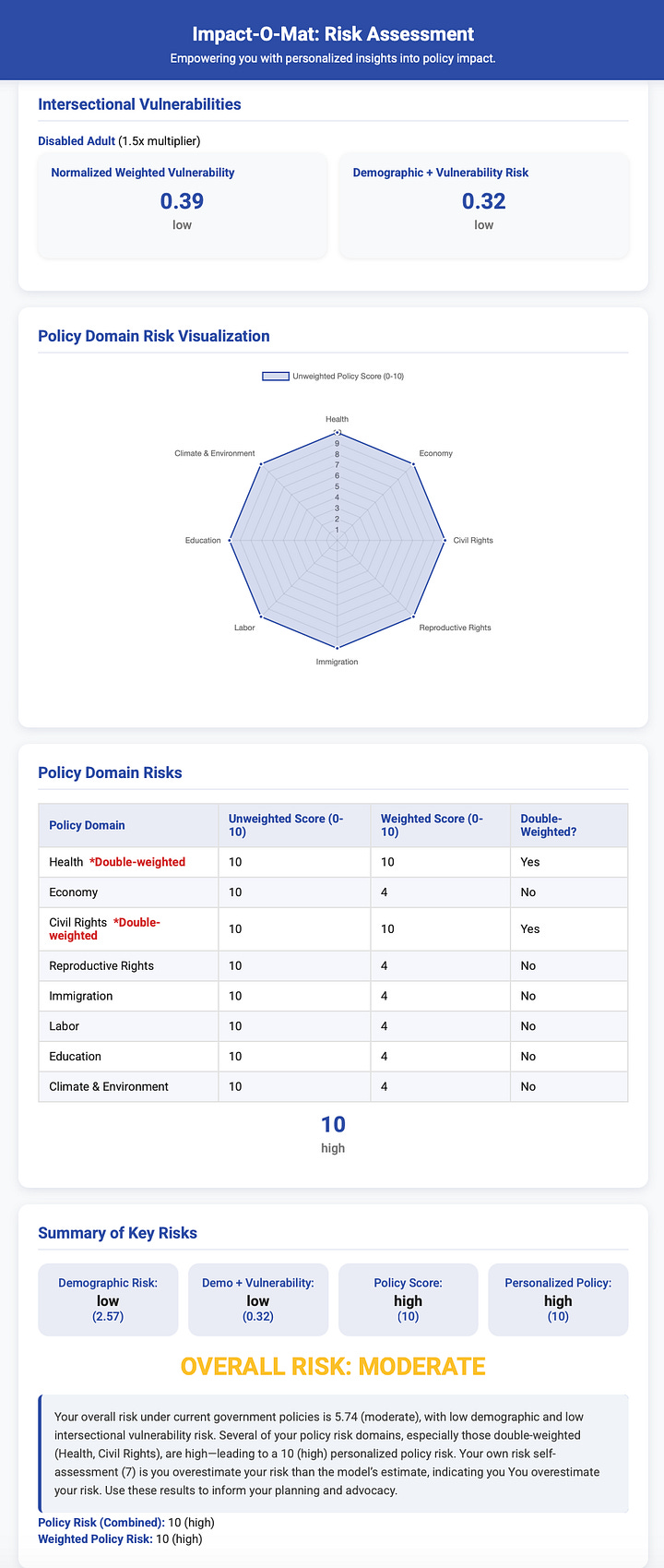



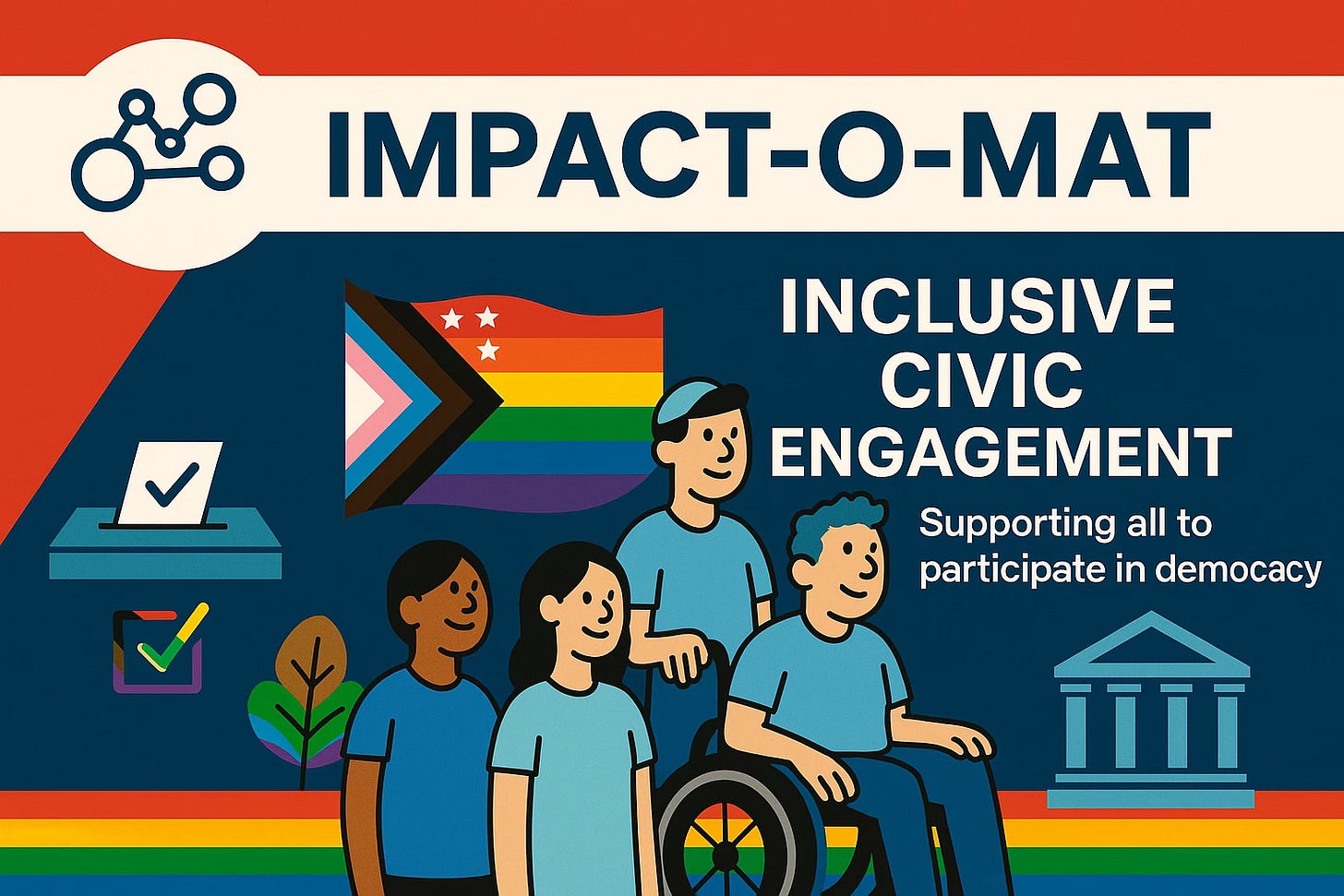
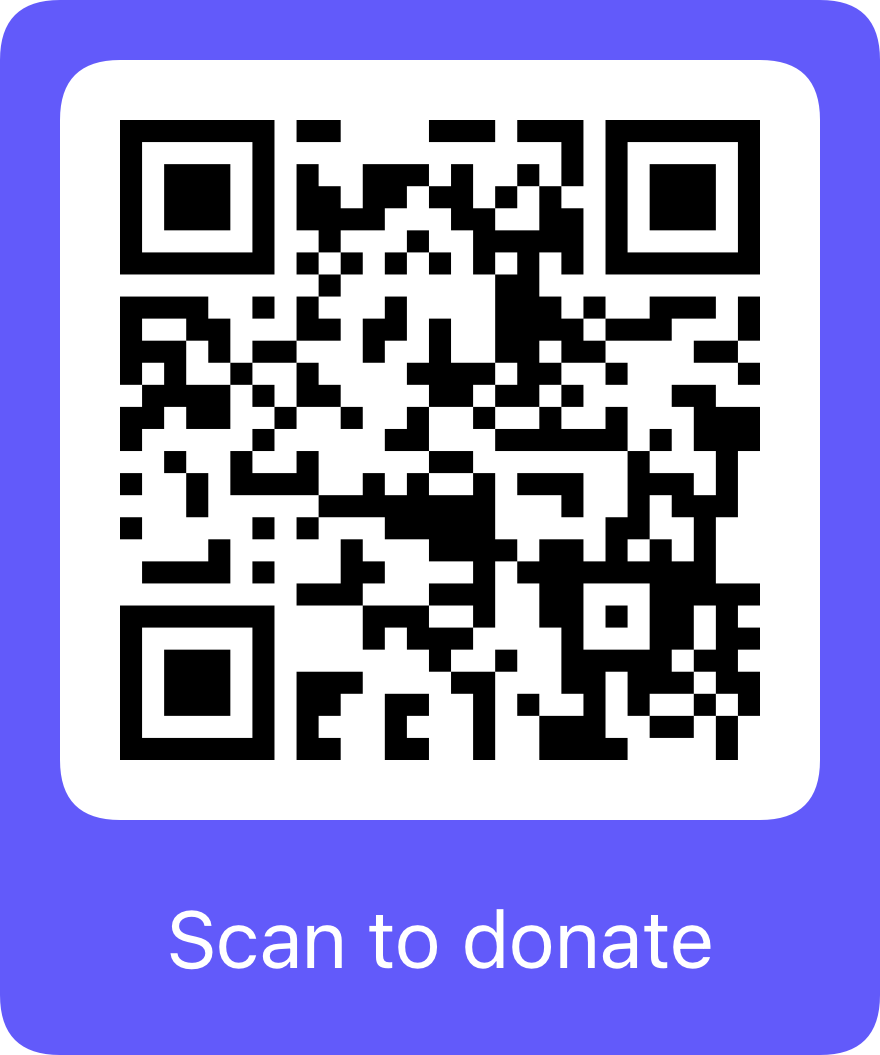
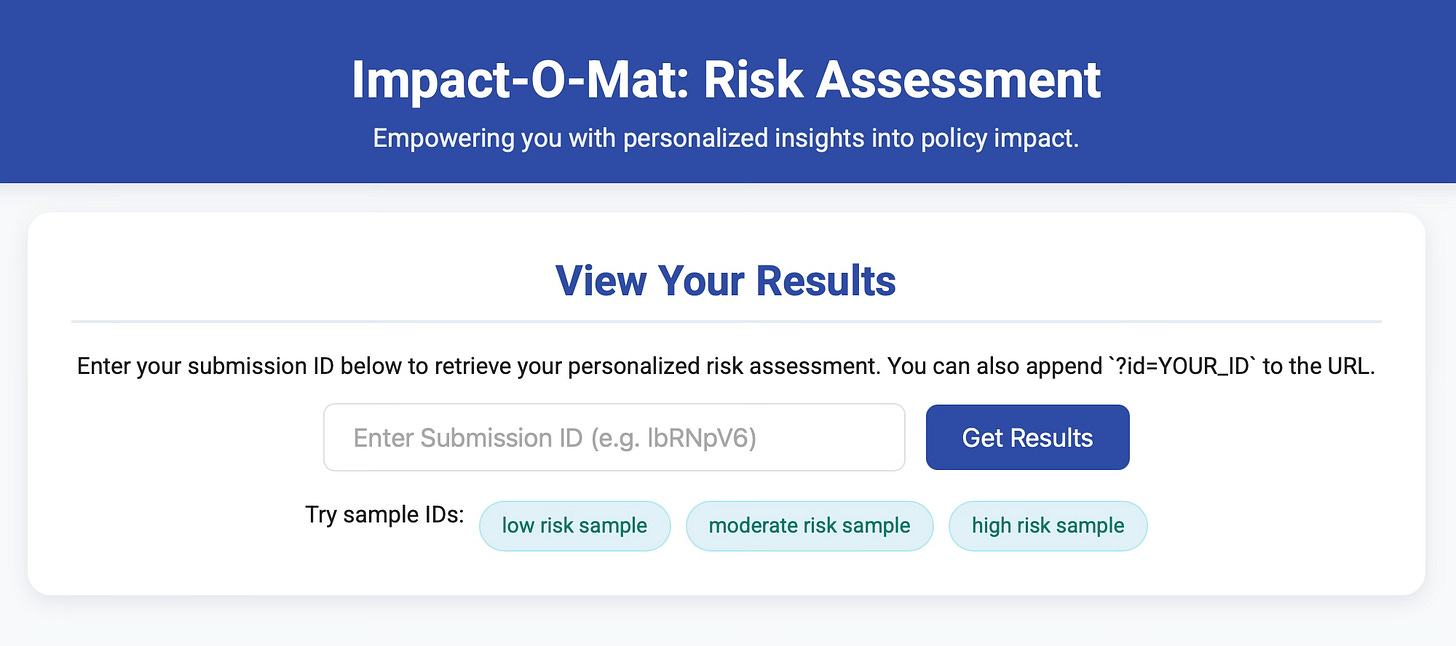
What an important and generous project and undertaking. I will spend some time with this. Your words here are resonant, and deeply human. As always.
Jay, you possess a brilliant heart mind soul. Excellent unfolding pointing
Clearing confusion
Thank you